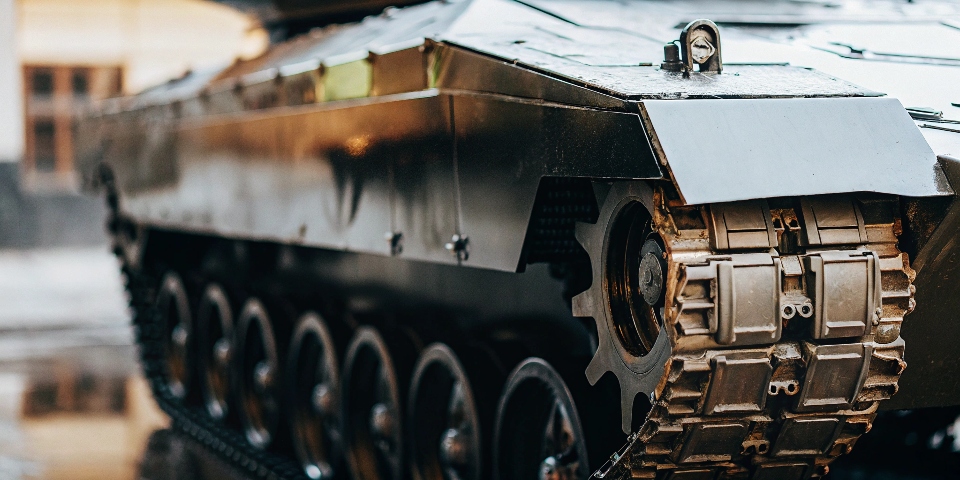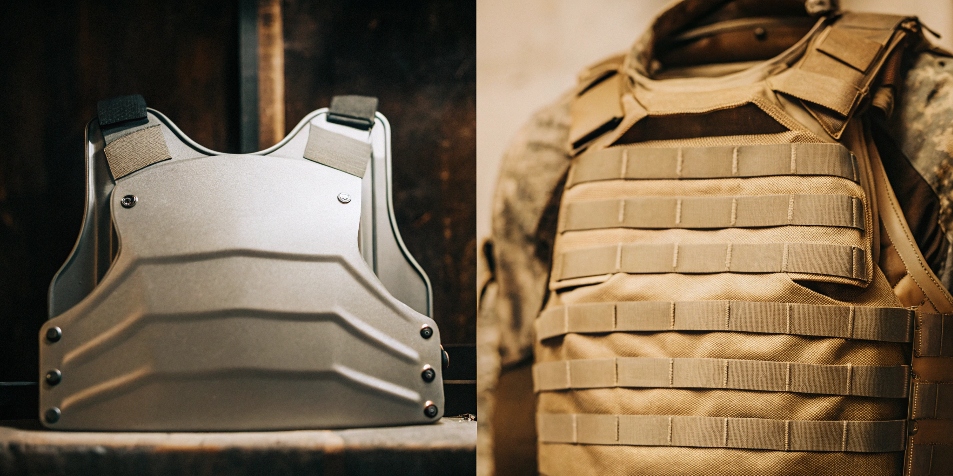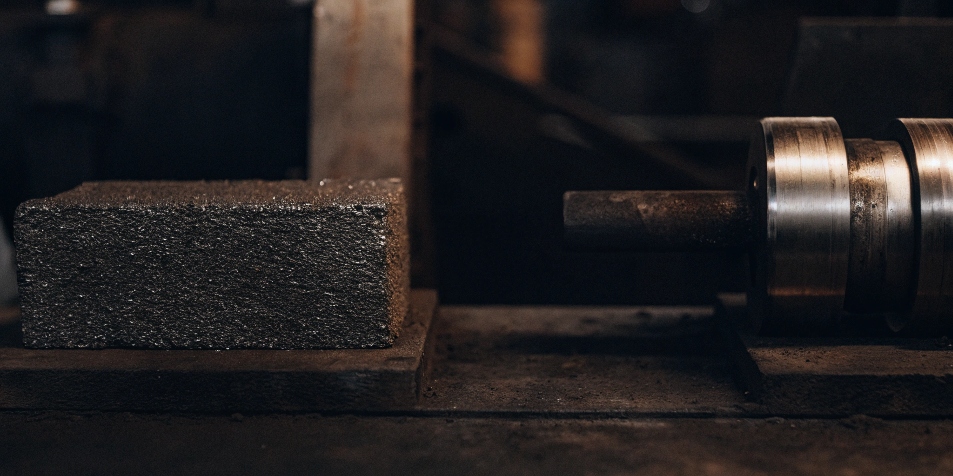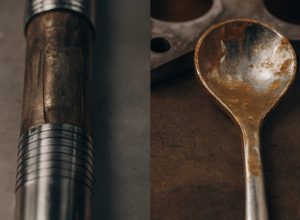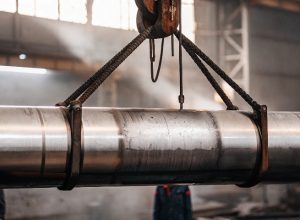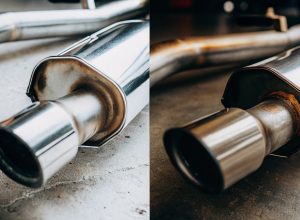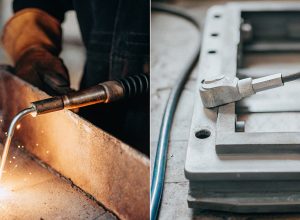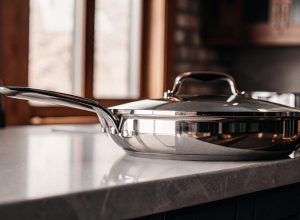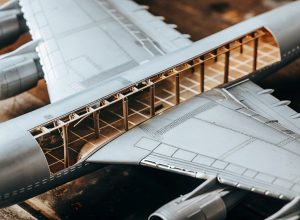Panzer müssen stark, aber nicht zu schwer sein. Man hört von der Stärke des Titans und fragt sich, ob es die Lösung ist. Aber seine Rolle in der Panzerung ist kompliziert.
Titan ist im Allgemeinen kein gutes Material für die Hauptpanzerung von Panzern. Es hat zwar ein ausgezeichnetes Verhältnis zwischen Festigkeit und Gewicht, aber seine hohen Kosten, die schwierige Herstellung und die geringere Härte im Vergleich zu speziellen Panzerstählen machen es für den Schutz gegen die schweren Geschosse, denen Panzer ausgesetzt sind, unpraktisch.
Diese Frage wird mir oft von Kunden aus dem Verteidigungssektor gestellt, insbesondere von solchen, die Innovationen anstreben. Sie sehen den Erfolg von Titan in der Luft- und Raumfahrt und fragen sich, warum es den Panzerbau nicht revolutioniert hat. Die Antwort ist nicht einfach, und man muss sich fragen, was "das Beste" für Panzer wirklich bedeutet. Es ist ein Gleichgewicht vieler Faktoren, nicht nur eines einzigen. Was ist also wirklich das beste Metall für diese Aufgabe?
Welches ist das beste Metall für Panzerungen?
Die Auswahl des richtigen Metalls für die Panzerung ist entscheidend. Ein Fehler kann Sicherheit und Leistung beeinträchtigen. Die beste Lösung ist nicht ein einziges Metall, sondern ein spezialisierter, mehrschichtiger Ansatz.
Das beste "Metall" für Panzer ist in der Regel eine hohe Härte, gewalzte homogene Panzerung1 (RHA) Stahl, wie AR500. Moderne Panzer verwenden diesen Stahl als Teil eines Verbundsystems, das mit Keramik, Polymeren und manchmal abgereichertes Uran2 für maximalen Schutz vor verschiedenen Bedrohungen.
3.](https://titonestmetal.com/wp-content/uploads/2025/07/the-best-metal-for-tank-armor-is-typically-a-h.jpg "Zusammengesetzte Panzerschichten")
Aus meinen Gesprächen mit Kunden aus dem Verteidigungssektor geht hervor, dass die Vorstellung von einem einzigen "besten" Metall der Vergangenheit angehört. Moderner Schutz beruht auf einem System. Ich erinnere mich an ein Gespräch mit David, einem Beschaffungsmanager in Deutschland, über dieses Thema. Er brauchte Material für eine Fahrzeugaufrüstung und betonte, dass die Panzerung nicht nur aus einer dicken Metallplatte besteht. Es ist ein ausgeklügeltes "Sandwich" aus verschiedenen Materialien.
Die Rolle des Stahls
Hochharter Stahl bleibt das Rückgrat dieses Systems. Er ist robust, verlässlich und für die Massenproduktion relativ erschwinglich. Er bietet die notwendige strukturelle Integrität und den grundlegenden Schutz. Wir liefern verschiedene Stahlsorten, aber für die Panzerung wird ein Stahl wie AR500 gewählt, weil er dem Eindringen von Geschossen standhält und diese zerschlägt.
Mehr als nur Metall: Komposit-Rüstung
Aber gegen moderne Panzerabwehrwaffen ist Stahl allein nicht genug. Deshalb ist die Verbundpanzerung heute Standard. Jede Schicht hat eine bestimmte Aufgabe.
| Rüstungskomponente | Primäre Funktion | Material Beispiel |
|---|---|---|
| Äußere Schicht | Geschosse zerschmettern | Hochharter Stahl |
| Mittlere Schicht | Aufprallenergie absorbieren | Keramische Platten (Tonerde) |
| Spall Liner | Interne Fragmente auffangen | Aramidfaser (Kevlar) |
Dieser mehrschichtige Ansatz ist weitaus wirksamer als jedes einzelne Metall. Er besiegt Bedrohungen, indem er sie aufbricht und die Energie über verschiedene Materialien absorbiert. Titan hat in diesem kosteneffizienten, mehrschichtigen System für Kampfpanzer einfach keine praktische Bedeutung.
Wäre Titan ein guter Körperpanzer?
Schutzwesten retten Leben, aber schwere Platten sind eine Belastung. Dieses zusätzliche Gewicht den ganzen Tag zu tragen ist anstrengend. Titan bietet eine leichtere Alternative, ohne den Schutz vor bestimmten Bedrohungen zu beeinträchtigen.
Ja, Titan eignet sich gut für Körperpanzerungen. Sein hohes Verhältnis von Festigkeit zu Gewicht bedeutet, dass es einen soliden Schutz gegen Handfeuerwaffengeschosse und Schrapnelle bei einem geringeren Gewicht als Stahl bietet. Es wird oft in Kombination mit anderen Materialien wie z. B. Weichpanzern verwendet, um eine Komplettlösung zu erhalten.
Hier sieht die Geschichte ganz anders aus. Wir haben viele Platten aus Titanlegierungen, wie Grade 5 (Ti-6Al-4V), an Kunden geliefert, die persönliche Schutzausrüstungen herstellen. In diesem Bereich hat das Gewicht oberste Priorität. Wenn ich mit diesen Käufern spreche, suchen sie immer nach Möglichkeiten, die Last für Soldaten und Polizisten zu verringern.
Der Gewichtsvorteil
Hier kann Titan glänzen. Eine Titanplatte kann einen ähnlichen Schutz gegen Handfeuerwaffengeschosse und -splitter bieten wie eine Stahlplatte, allerdings bei etwa 40% weniger Gewicht. Für jemanden, der den ganzen Tag eine Rüstung trägt, ist dieser Unterschied enorm. Er verringert die Ermüdung und verbessert die Beweglichkeit. Ein weiterer Vorteil, den ich immer wieder erwähne, ist die Korrosionsbeständigkeit von Titan. Es rostet nicht durch Schweiß oder Feuchtigkeit, was bei Stahlplatten ein echtes Problem ist, wenn deren Beschichtung beschädigt wird.
Beschränkungen gegen hochkalibrige Geschosse
Titan ist jedoch nicht für alles die beste Wahl. Zum Stoppen von Hochgeschwindigkeitsgeschossen (wie denen, die einen Schutz der Stufe IV erfordern) sind Keramikplatten viel besser geeignet. Keramik ist extrem hart und wirkt, indem es das eintreffende Geschoss zerschlägt. Titan ist ein Metall, das ein Geschoss aufhält, indem es sich verformt und die Energie absorbiert. Das Geschoss wird zwar aufgehalten, aber die "Rückseitenverformung" kann schwerwiegend sein und möglicherweise schwere Schäden verursachen. Trauma durch stumpfe Gewalteinwirkung4 für den Träger. Aus diesem Grund eignet sich Titan perfekt für eine bestimmte Nische: leichte, verdeckbare Rüstungen, bei denen die Hauptbedrohungen Handfeuerwaffen oder Messer sind.
Warum wird Titan nicht in Tanks verwendet?
Titan ist ein Supermetall, das in Jets und Raumschiffen verwendet wird. Man sollte meinen, dass es sich perfekt für Panzer eignet. Aber man sieht keine Panzer aus Titan, und der Grund dafür ist nicht nur die Festigkeit.
Titan wird in Tanks vor allem wegen seiner extrem hohen Kosten, die ein Vielfaches der Kosten von Stahl betragen, nicht verwendet. Außerdem ist es sehr schwer zu bearbeiten, zu schweißen und zu den großen, dicken Platten zu formen, die für einen Tankrumpf benötigt werden, was die Herstellung langsam und teuer macht.
Dabei geht es um zwei ganz praktische Probleme: Geld und Herstellung. Ich gehe mit Kunden wie David oft diesen Vergleich durch, und die Zahlen machen die Entscheidung deutlich.
Der abschreckende Kostenfaktor
Ein Kampfpanzer ist ein massives Fahrzeug mit einem Gewicht von über 60 Tonnen. Die schiere Menge des benötigten Metalls ist immens. Titan ist grundsätzlich teurer als Stahl. Das Rohmaterial, Titanschwamm, ist in der Herstellung sehr teuer. Der Endpreis einer Titanplatte kann 10 bis 20 Mal so hoch sein wie der einer Stahlplatte derselben Größe. Der Bau eines ganzen Panzers aus Titan würde das Fahrzeug so teuer machen, dass keine Regierung es sich leisten könnte, sie in der erforderlichen Anzahl zu bauen. Stahl ist in Hülle und Fülle vorhanden, erschwinglich und erfüllt seine Aufgabe effektiv.
Die Herausforderung der Fabrikation
Selbst wenn die Kosten keine Rolle spielen würden, ist die Herstellung eines Panzers aus Titan ein Alptraum für jeden Ingenieur. Titan ist sehr schwer zu bearbeiten. Für das Schweißen sind besondere Bedingungen erforderlich, in der Regel ein Vakuum oder eine Argongasumgebung, damit es nicht spröde wird. Bei der maschinellen Bearbeitung von Titan werden die Werkzeuge extrem schnell abgenutzt. Ich habe einmal gesehen, wie in einer Werkstatt ein großes Titanteil hergestellt wurde, und das Verfahren war unglaublich langsam und vorsichtig. Die Anwendung dieses Verfahrens auf etwas so Großes und Komplexes wie eine Panzerhülle ist für eine effiziente Produktion in großem Maßstab einfach nicht praktikabel.
| Faktor | Gewalzter homogener Stahl | Titan-Legierung (Ti-6Al-4V) |
|---|---|---|
| Relative Kosten | 1x | 10x - 20x |
| Schweißeignung | Ausgezeichnete, standardisierte Wege | Schwierig, erfordert Abschirmung |
| Bearbeitbarkeit | Gut | Schlechter, hoher Werkzeugverschleiß |
| Massenproduktion | Sehr gut machbar | Nicht praktisch |
Warum wird Titan nicht für Rüstungen verwendet?
Titan wird also für einige Panzer verwendet, aber nicht für Panzer. Das kann verwirrend sein. Der Grund dafür sind nicht nur die Kosten, sondern auch die Art und Weise, wie sich das Metall selbst unter extremer Belastung verhält.
Titan wird nicht häufig für schwere Rüstungen verwendet, da es nur schlecht gegen Mehrfachtreffer5 in demselben Bereich. Außerdem hat es eine geringere Härte als spezieller Panzerstahl und kann bei sehr hohen Aufprallgeschwindigkeiten Feuer fangen, ein Phänomen, das als Pyrophorizität bekannt ist.
Hier helfen mein technisches Team und ich unseren Kunden wirklich, die feinen Details der Materialwissenschaft zu verstehen. Es geht um die Leistung unter Beschuss, und Titan hat ein paar entscheidende Schwächen in einer schweren Kampfrolle.
Härte vs. Festigkeit
Zunächst ist es wichtig zu wissen, dass Festigkeit und Härte nicht dasselbe sind. Titan hat eine erstaunliche Festigkeit, was bedeutet, dass es nicht auseinandergerissen werden kann. Das ist großartig für einen Flugzeugflügel. Aber eine Panzerung braucht Härte, um ein Projektil aufzuhalten. Sie muss so hart sein, dass sie die ankommende Bedrohung zerschmettert. Gehärteter Panzerstahl ist wesentlich härter als Titanlegierungen. Das bedeutet, dass ein Projektil, das von einer Stahlplatte aufgehalten würde, eine Titanplatte derselben Dicke durchschlagen könnte.
Das Problem der wiederholten Einschläge
Zweitens zeigen unsere eigenen technischen Daten, dass Titan mehrere Treffer nicht gut verträgt. Wenn ein Panzer im Gefecht ist, wird er wahrscheinlich mehr als einmal getroffen, manchmal sogar an derselben Stelle. Stahlpanzer sind besser in der Lage, ihre strukturelle Integrität zu erhalten, nachdem sie Schaden genommen haben. Titan ist, wenn es einmal getroffen wurde, an dieser Stelle deutlich schwächer. Und schließlich gibt es ein ernsthaftes Risiko, die so genannte Pyrophorizität. Bei den unglaublichen Geschwindigkeiten und Drücken, die eine Panzerabwehrwaffe erzeugt, können sich feine Titanpartikel beim Aufprall entzünden. Ein Brand ist das Letzte, was Sie sich an Ihrem gepanzerten Fahrzeug wünschen.
Schlussfolgerung
Zusammenfassend lässt sich sagen, dass sich Titan hervorragend für leichte Panzerungen eignet. Bei Panzern sind jedoch aufgrund der hohen Kosten, der schwierigen Herstellung und der begrenzten Leistungsfähigkeit Stahl- und Verbundwerkstoffpanzer die bessere Wahl für den Schutz.
-
Finden Sie heraus, warum RHA eine bevorzugte Wahl für Panzerungen ist. ↩
-
Entdecken Sie die einzigartigen Eigenschaften von abgereichertem Uran für Panzerungen. ↩
-
Entdecken Sie, wie jede Schicht der Verbundpanzerung zum Gesamtschutz beiträgt. ↩
-
die Risiken von Verletzungen durch stumpfe Gewalteinwirkung bei der Konstruktion von Panzern zu verstehen. ↩
-
Erfahren Sie mehr über die Leistung verschiedener Materialien bei wiederholten Stößen. ↩

